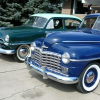-
Posts
6,062 -
Joined
-
Last visited
-
Days Won
63

RobertKB replied to MarcDeSoto's topic in P15-D24 Forum

RobertKB replied to MarcDeSoto's topic in P15-D24 Forum

RobertKB replied to Bryan's topic in P15-D24 Forum

RobertKB replied to MarcDeSoto's topic in P15-D24 Forum

RobertKB replied to MarcDeSoto's topic in P15-D24 Forum

RobertKB replied to MarcDeSoto's topic in P15-D24 Forum

RobertKB replied to Jocko_51_B3B's topic in Mopar Flathead Truck Forum

RobertKB replied to MarcDeSoto's topic in P15-D24 Forum

RobertKB replied to MarcDeSoto's topic in P15-D24 Forum
We have placed cookies on your device to help make this website better. You can adjust your cookie settings, otherwise we'll assume you're okay to continue.

